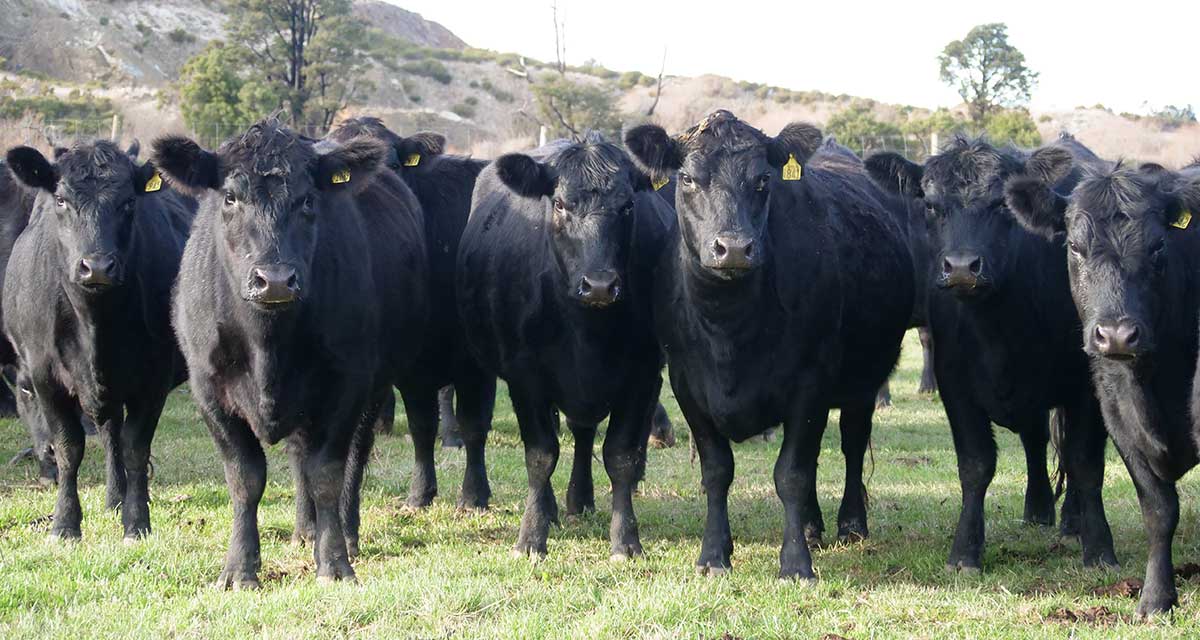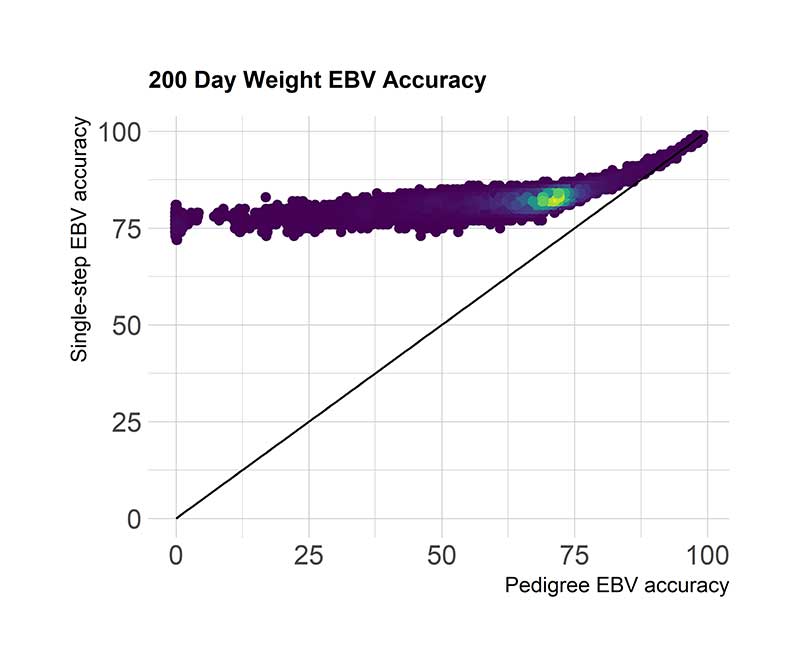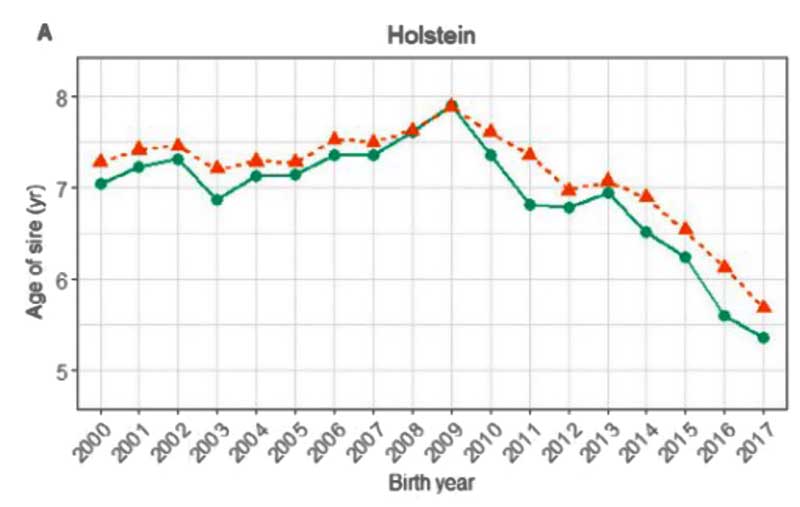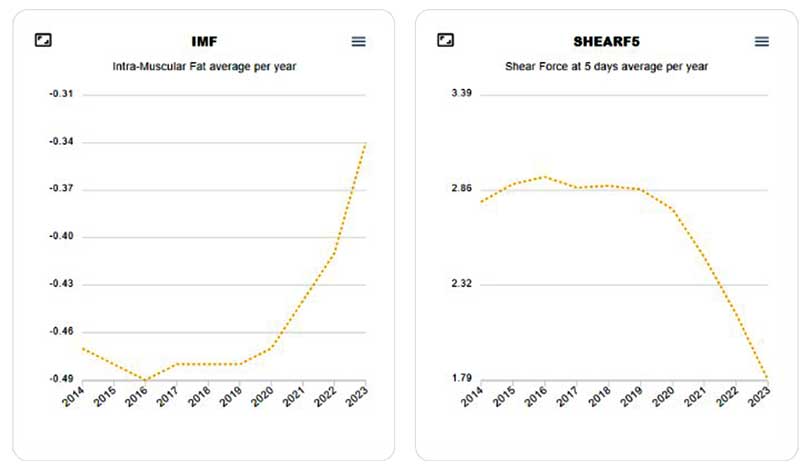Talking Genomics – The Benefits of Genomic Selection


Genomic selection, being the utilisation of information from an animal’s DNA to predict its breeding value for specific traits, is now routinely utilised in livestock breeding programs all around the globe.
This edition of ‘Talking Genomics’ discusses what the value proposition of genomic selection is, and what benefits genomic testing offers to a livestock breeder.
Broadly, by comparison to traditional selection methods, genomic selection facilitates more accurate selection decisions, earlier in an animal’s life, and for additional traits and animals.

More Accurate Breeding Values
Genomic selection facilitates the prediction of breeding values with greater accuracy, which subsequently results in more accurate selection of breeding animals, and faster genetic improvement.
While considerable additional accuracy is observed across all traits, the most additional accuracy is realised for:

Selection Decisions Early in Life
Genomic selection facilitates the prediction of accurate breeding values early in an animal’s life, which enables the mating of young animals with greater confidence, such as the use of ram lambs, yearling bulls or unproven sires, resulting in a shorter generation length, and faster genetic improvement.
The availability of accurate breeding values early in an animal’s life also provides greater flexibility when making management decisions, such as the ability to make culling decisions well before animals reach breeding age.

Selection for Additional Traits
Genomic selection facilitates a greater number of traits to be considered when making selection decisions by making selection possible for traits that can’t be routinely, or easily measured on farm.
Examples include traits associated with the sustainability of a beef enterprise, such as animal resilience and methane emissions, or selection for intramuscular fat and meat tenderness in sheep breeding programs.
The consideration of additional traits makes selection possible for a greater proportion of a breeding program’s overall breeding objective, resulting in faster genetic improvement.

Selection for Additional Animals
By comparison to traditional genetic evaluation programs that required pedigree information for the calculation of breeding values, genomic selection enables the calculation of breeding values for animals in the absence of pedigree information.
This enables:
Other Benefits
In addition to facilitating more accurate selection decisions, earlier in an animal’s life, and for additional traits and animals, genomic selection also offers a number of other benefits in a livestock breeding program.
This prevents the need for the on-farm collection of performance measurements in some situations, such as in smaller breeding enterprises, for difficult or expensive to measure traits, when animals are managed on agistment or lease blocks with limited facilities or labour, or where contemporary groups need to be dispersed for management purposes, such as in times of drought, flood or fire.
What Genomics is Not?
While genomic selection offers many advantages, it is equally important to understand what genomic selection doesn’t provide to a livestock breeding program.
A common misconception is that genomic selection directly assesses the genes that control productivity traits in livestock breeding program, whereas in reality, the genes have largely not been identified. Rather than assessing the genes of an animal directly, genomic selection is predominantly based on gene markers, which are used to predict an animal’s genetic superiority or inferiority.
Likewise, genomic selection doesn’t replace the need for breeding values. Whilst some livestock breeders may have hoped that genomic technology would make breeding values redundant, the reality is the opposite. Genomic selection utilises the information from an animal’s DNA to predict its breeding value, rather than replacing the need for breeding values.
Another common misconception is that genomic selection replaces the need for the collection of performance measurements. The availability of performance measurements is a critical requirement of genomic selection, with performance measurements essential for the establishment and maintenance of a genomic reference population. Further, in most situations, the accuracy of breeding values will be maximised when both genomic information and effective performance measurements are included in the calculation of the breeding value.
In seedstock operations, genomic selection also doesn’t replace the need for the collection of important information that is required for the genetic evaluation of performance measurements, or for the registration of animals, such as birth date information.
To further discuss the utilisation of genomic testing within your livestock breeding program, contact staff at Neogen Australasia.
Andrew Byrne – Senior Technical Product Specialist, Neogen Australasia